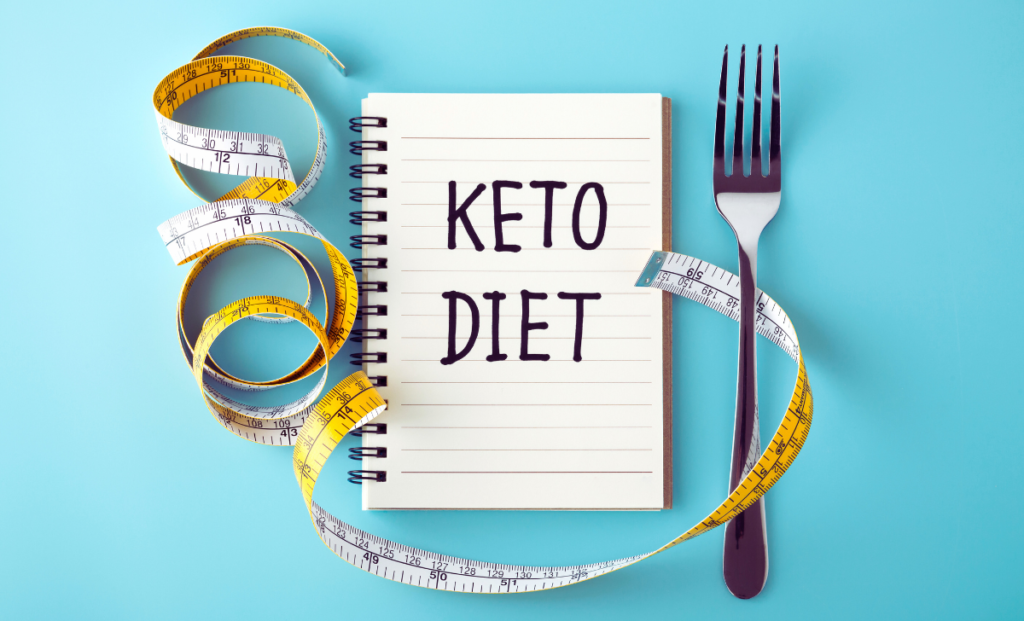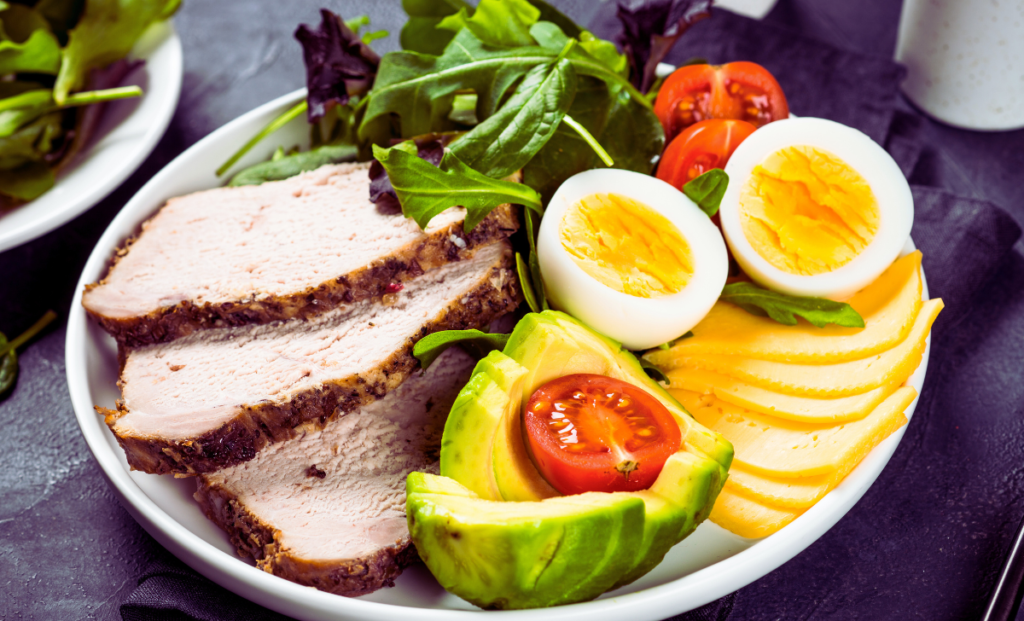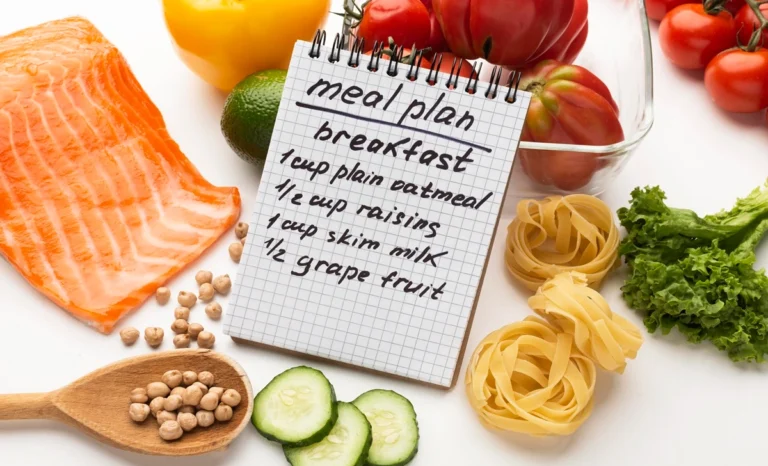Welcome to our Ultimate Keto Diet Guide for Beginners —a scientifically backed approach to weight loss and improved health. In this article, we’ll provide a detailed roadmap to help you start and succeed on your keto journey, covering everything from the basics of the diet to practical tips for long-term success.
Table of Contents
ToggleIntroduction to the Ketogenic Diet
The ketogenic diet, or keto for short, is a high-fat, moderate-protein, and low-carbohydrate eating plan designed to shift the body’s metabolism from primarily burning glucose for fuel to burning fat. This metabolic state, ketosis, offers numerous health benefits, including weight loss, improved energy levels, and enhanced mental clarity.
Benefits of the Keto Diet

Before diving into the specifics of the diet, let’s explore some of the key benefits associated with keto:
Weight loss: The keto diet promotes fat burning and can lead to significant weight loss, particularly in stubborn areas like the abdomen, by limiting carbohydrate intake and increasing fat consumption.
Stable energy levels: Unlike diets high in refined carbohydrates, which can cause energy spikes and crashes, the keto diet provides a steady energy source from fat, leading to sustained energy levels throughout the day.
Mental clarity: Ketones, the byproducts of fat metabolism during ketosis, have been shown to provide a more efficient fuel source for the brain, resulting in improved cognitive function and mental clarity.
Improved metabolic health: The keto diet can help stabilize blood sugar levels and improve insulin sensitivity, making it a valuable tool for managing conditions like type 2 diabetes and metabolic syndrome.
Reduced inflammation: Emerging research suggests that the keto diet may have anti-inflammatory effects, potentially reducing the risk of chronic inflammation-related diseases, such as heart disease and Alzheimer’s disease.
Getting Started on Keto Diet Guide for Beginners

Now that you understand the basics of the keto diet and its potential benefits, let’s discuss how to get started:
1. Setting Realistic Goals and Expectations
Before beginning any new dietary regimen, it’s essential to establish realistic goals and expectations. Whether your primary goal is weight loss, improved health markers, or increased energy levels, clearly understanding your objectives will help keep you motivated and focused.
2. Clearing Out Your Pantry and Fridge
Start by clearing out your pantry and fridge of non-keto-friendly foods to set yourself up for success on the keto diet. This includes items high in carbohydrates, such as grains, sugars, and processed foods. Instead, stock up on keto-friendly staples like:
Healthy fats: Avocados, coconut oil, olive oil, nuts, and seeds.
Protein sources: Beef, chicken, fish, eggs, and tofu.
Low-carb vegetables: Leafy greens, broccoli, cauliflower, zucchini, and peppers.
3. Meal Planning and Prepping for Success
Meal planning and preparation are critical components of a successful keto journey. Start by creating a weekly meal plan that includes a variety of keto-friendly recipes for breakfast, lunch, dinner, and snacks. Focus on incorporating whole, nutrient-dense foods into your meals to meet your nutritional needs.
Once you have your meal plan, prepare ingredients and cook meals beforehand. This could involve chopping vegetables, marinating meat, or preparing large batches of keto-friendly meals that you can portion out and freeze for later.
4. Grocery Shopping Tips for Keto-Friendly Foods
Navigating the grocery store aisles can be daunting when following a keto diet, but it can be a breeze with some planning and preparation. Here are some tips for keto-friendly grocery shopping:
– Stick to the store’s perimeter, where you’ll find fresh produce, meat, seafood, and dairy products.
– Read food labels carefully and avoid products with added sugars, starches, or artificial ingredients.
– Stock up on keto-friendly staples like avocados, eggs, cheese, nuts, seeds, and low-carb vegetables.
– Consider shopping at specialty stores or online retailers that cater to the keto community, where you’ll find a more comprehensive selection of keto-friendly products and ingredients.
Understanding Macros and Tracking Them Effectively
Macronutrient tracking is a fundamental aspect of the keto diet. By monitoring your intake of carbohydrates, fats, and protein, you can ensure you’re staying within your target ranges for ketosis. Here’s how to do it effectively:
1. Introduction to Tracking Apps and Tools
Numerous apps and online tools are available to help you track your macros and stay on target with your keto goals. Some popular options include MyFitnessPal, Cronometer, and Carb Manager. These apps allow you to log your food intake, track your macronutrients, and monitor your progress over time.
2. Adjusting Macros Based on Individual Needs and Goals
While there are general guidelines for macronutrient intake on the keto diet, tailoring your approach to your individual needs and goals is essential. Age, gender, weight, activity level, and health conditions can all impact your ideal macro ratios. Experiment with different macro ratios until you find what works best for you, and don’t hesitate to seek guidance from a registered dietitian or nutritionist if needed.
Practical Tips for Success on Keto
In addition to tracking your macros, there are several other practical tips you can implement to maximize your success on the keto diet:
1. Staying Hydrated and Replenishing Electrolytes
Dehydration and electrolyte imbalances are common side effects of the keto diet, so it’s essential to stay hydrated and replenish electrolytes regularly. Aim to drink at least eight glasses of water daily, and consider supplementing with electrolyte-rich foods like leafy greens, avocados, and nuts.
2. Prioritizing Whole, Nutrient-Dense Foods
While relying on packaged keto snacks and convenience foods may be tempting, prioritizing whole, nutrient-dense foods will provide your body with the essential vitamins, minerals, and antioxidants for optimal health. Focus on incorporating fresh vegetables, healthy fats, and high-quality protein sources into your meals and snacks.
3. Listening to Your Body
Finally, listen to your body and how different foods and eating patterns make you feel. If you’re experiencing adverse side effects like fatigue, headaches, or digestive issues, it may be a sign that your body isn’t adapting well to the keto diet. Feel free to adjust your diet or seek professional guidance if needed.
Conclusion
Starting the keto diet can be a transformative journey toward better health and vitality. By following the tips and strategies outlined in this guide, you’ll be well-equipped to navigate the challenges and reap the rewards of the ketogenic lifestyle. Here’s to your success on your keto journey!
(FAQs):
What is the ketogenic diet?
Answer: The ketogenic diet, or keto diet, is a high-fat, low-carbohydrate eating plan that aims to shift the body into a state of ketosis. In ketosis, the body burns fat for fuel instead of carbohydrates, leading to weight loss and various health benefits.
How does the ketogenic diet work?
Answer: The ketogenic diet drastically reduces carbohydrate intake and increases fat consumption. This depletion of carbohydrates forces the body to rely on fat for fuel, leading to the production of ketones by the liver. These ketones serve as an alternative energy source, allowing the body to enter a state of ketosis.
What can I eat on the ketogenic diet?
Answer: On the ketogenic diet, you can eat foods high in healthy fats, moderate in protein, and low in carbohydrates. This includes meat, fish, eggs, avocados, nuts, seeds, leafy greens, and low-carb vegetables. It’s important to avoid high-carb foods like grains, sugars, starchy vegetables, and processed foods.
What are the potential benefits of the ketogenic diet?
Answer: Some potential benefits of the ketogenic diet include weight loss, improved energy levels, enhanced mental clarity, better blood sugar control, and reduced inflammation. It may also have therapeutic applications in conditions like epilepsy, Alzheimer’s disease, and certain types of cancer.
How do I get started on the ketogenic diet?
Answer: To get started on the ketogenic diet, it’s essential to first educate yourself about the principles of the diet and its potential benefits. Next, clear out your pantry and fridge of non-keto-friendly foods, stock up on keto-friendly staples, and create a meal plan that includes a variety of keto-friendly recipes. Tracking your macronutrient intake and staying hydrated are also important aspects of success on the keto diet.
Are there any potential side effects of the ketogenic diet?
Answer: While many people experience positive results on the ketogenic diet, some may experience side effects, especially during the initial transition period. These may include fatigue, headaches, dizziness, constipation, and bad breath. These side effects are often temporary and can be mitigated by staying hydrated, replenishing electrolytes, and ensuring adequate fiber intake.
Is the ketogenic diet safe for everyone?
Answer: While the ketogenic diet is generally considered safe for most people, it may only suit some. Individuals with certain medical conditions, such as pancreatitis, gallbladder disease, or liver disease, should consult with a healthcare professional before starting the diet. Pregnant or breastfeeding women should also seek guidance from their healthcare provider before embarking on the ketogenic diet.









Hello! I hope you’re having a great day. Good luck 🙂
Thank you for your response 🤝